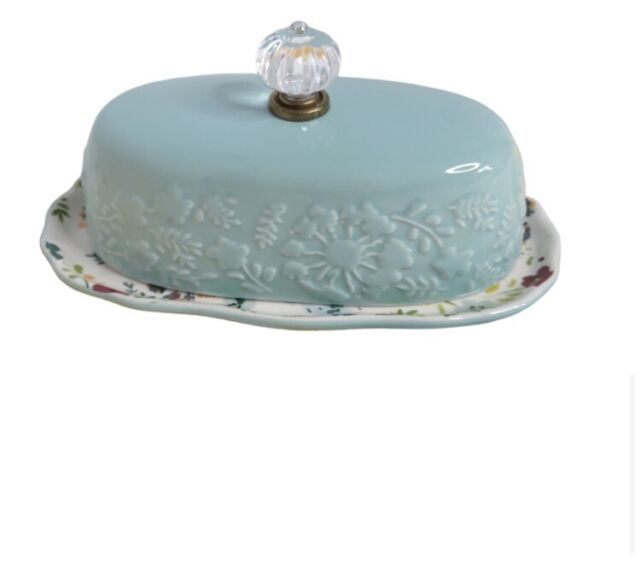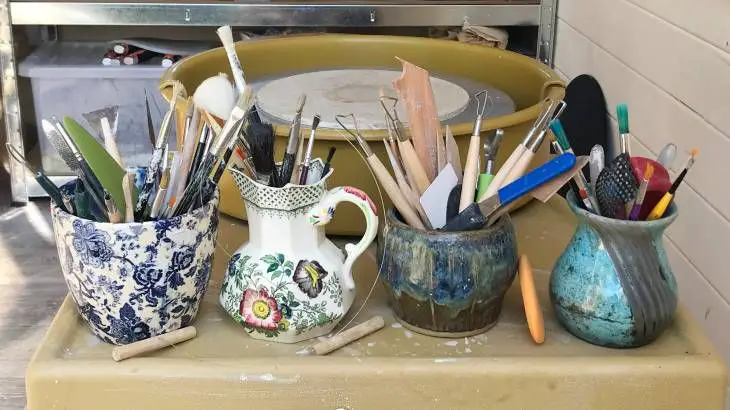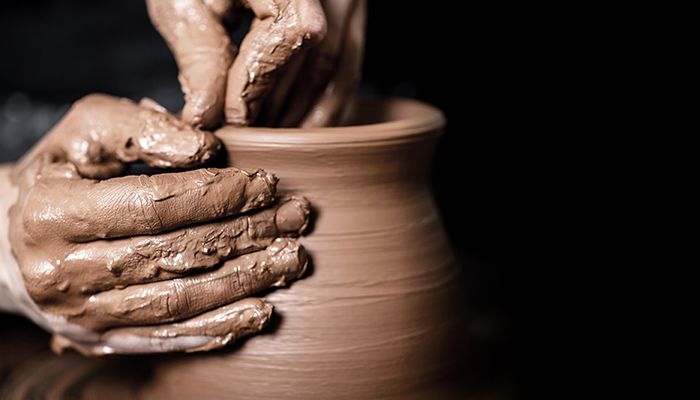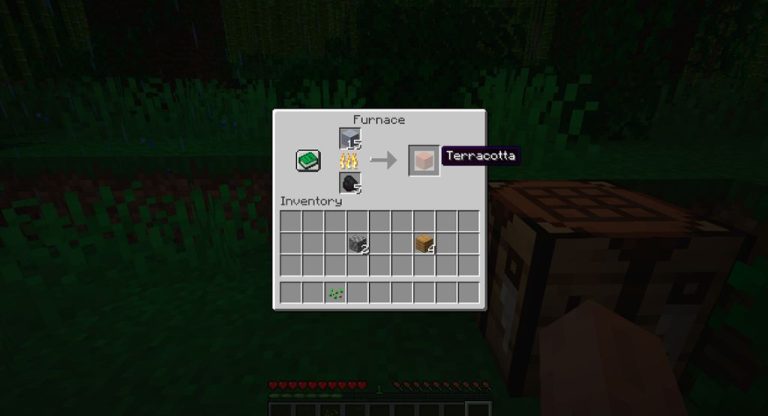How Do You Stop Clay From Cracking When It Dries?
Clay is an earthy material containing minerals like kaolinite that becomes plastic and malleable when moist but hard when fired through baking or drying. Cracking occurs when the clay body loses moisture too quickly, creating stresses between the dry exterior and moist interior. There are various techniques to minimize cracking by controlling the clay’s moisture content, drying rate, composition, and shaping.
The most common reasons clay cracks are:
- Letting it dry too fast by exposing large surface areas to dry air.
- Using impure clay bodies with organic matter or large particle sizes.
- Making pieces that are too thick or unevenly shaped.
- Allowing moisture levels or temperatures to fluctuate while drying.
Proper clay preparation, cautious drying methods, using consistent materials, and mindful design can help stop cracks from forming.
Moisture Content
Proper moisture content is crucial for preventing cracks and fissures in clay as it dries. When clay is too wet, it will shrink excessively as the water evaporates. This leads to stress cracks as the clay contracts. Having clay that is too dry can also cause issues. Very dry clay has low plasticity and flexibility. It becomes stiff and brittle, making it prone to cracking. The optimal moisture content will vary based on the clay body composition. In general, clay should feel cool, firm, and plastic. It should not feel soggy wet or crumbly dry. Careful moisture control allows clay to dry evenly without defects. Allowing moisture levels to fluctuate widely during the drying process can also lead to uneven shrinkage and cracks.
Drying Methods
One of the most important factors in preventing cracks and tears while drying clay is controlling the drying speed. Clay dries from the outside in, so rapid surface drying causes the exterior to shrink faster than the interior. This builds up internal stresses that lead to cracks and warping.
To slow down drying, it’s recommended to:
- Air dry clay slowly at room temperature. Don’t use direct heat or fans.
- Wrap clay in plastic wrap or wet rags when not working on it. This prevents surface drying.
- Use damp box storage. Place the clay in a box lined with wet sponges or towels to maintain humidity.
- Mist clay with water spray while working to keep surface moist.
- Cover unfired pieces with damp cloths when not working on them.
Slow, even drying allows moisture to evaporate uniformly throughout the clay body, preventing cracks and tears.
Clay Composition
The ingredients that make up clay body have a significant impact on its drying properties. Clays with high sand or grog content tend to dry faster and be more prone to cracking. Sand particles do not shrink as the clay dries, creating internal stresses. Grog is ground up fired clay added to raw clay. It creates pores that make the clay more porous and quicker to dry.
Clays with high plasticity, like ball clays and bentonites, shrink considerably more as they dry. The shrinkage combined with the dense, less porous nature of these clays, makes them more prone to cracking. However, small additions of these clays help make clay more workable and add plasticity. It’s about finding the right balance for your particular clay body recipe.
Some ways to reduce cracking in high plasticity clays are adding sand or grog to create more pores, drying more slowly, using thicker sections, and scoring or compressing surfaces to relieve stresses. Testing samples when developing clay recipes is key to finding combinations that resist cracking.
Glazes and Sealants
Applying glazes and sealants to the surface of clay pieces can help prevent cracking as the clay dries. Glazes provide a glass-like coating that seals the pores of the clay and slows down moisture evaporation from the interior. Common glazes used include zinc silicates, lead glazes, alkaline glazes, and salt glazes. Wax emulsions and acrylic polymer sealants can also be brushed or sprayed onto the surface of unfired clay to inhibit moisture loss. These sealants penetrate the clay body and bind particles together for added strength. Always follow manufacturer instructions for proper application and firing temperatures. Multiple thin layers of glaze or sealant tend to work better than a single thick coating. Filling any cracks that do develop with a liquid clay slip can also minimize further cracking as drying continues. Testing different combinations of glazes and sealants on sample pieces first is recommended to ensure compatibility with the specific clay body chemistry and desired results.
Climate Control
Controlling the temperature and humidity when drying clay is crucial to prevent cracking. Here are some tips for regulating the climate:
Use a space heater or cooling fan to maintain an ideal temperature range of 60-80°F. Fluctuations in temperature can cause the clay to expand and contract, leading to cracks.
Consider using a dehumidifier if the room’s humidity is above 50%. High humidity slows the drying process and can prevent proper evaporation of moisture from the clay.
Avoid placing clay pieces directly in front of heating/cooling vents as the direct blast of air can dry the surface too rapidly. Circulating the air gently is best.
When possible, dry clay pieces in a spare bathroom. Run the exhaust fan continuously to vent moisture and maintain a stable environment.
Insulate clay pieces with plastic sheeting or cardboard to slow moisture loss and prevent drafts from causing cracks.
Monitor the climate with a thermometer and hygrometer. Adjust heating/cooling and humidity levels regularly to stay in the optimal range.
Curing
Allowing clay to cure before drying is an important step to prevent cracking. When clay is freshly thrown or molded, it contains a high amount of moisture. If clay is dried immediately, the surface dries faster than the interior and uneven shrinkage occurs. This causes stress between the dry exterior and moist interior, resulting in cracks and splits.
Curing gives time for moisture to evaporate slowly and evenly throughout the clay body. During the curing stage, the clay becomes firmer as water evaporates from the surface, but the interior remains plastic. This allows the clay particles to align themselves uniformly as the moisture content decreases. Curing results in even shrinkage and significantly reduces the chances of cracking during drying.
The ideal curing conditions are cool temperatures between 60-70°F and high humidity around 90%. The climate should be controlled to prevent uneven drying on the surface. Allow the clay to cure for at least 1-2 weeks before starting the drying process. The longer the cure, the more even the moisture loss will be. Curing develops the plasticity of the clay and results in fewer defects.
Work Size and Shape
When sculpting clay works, the size and shape can impact drying and make pieces more prone to cracking. Large, thick, solid sculptures with minimal detailing tend to have the most cracking issues. As clay dries, the outer portions contract faster than the inner moist clay. This causes stress between the inner and outer layers.
To reduce cracking, opt for thinner constructions and more delicate detailing. Sculptures with thinner legs, walls, protrusions, and carvings allow moisture to escape more evenly. Avoid massive, blocky shapes in favor of intricate shapes with gaps, holes, and variability in thickness.
Smaller sculptures are less prone to cracking because moisture escapes easier from less volume. Larger pieces have longer drying times, allowing more opportunity for inner stresses to develop. Keep individual components smaller if making a large multipart sculpture. Also avoid attaching wet additions onto an already dried base.
In summary, ideal designs to resist cracking include smaller pieces, thin protruding shapes, gaps/holes, varied thicknesses, and delicate detailing. Let the clay dry fully between steps and avoid attaching wet clay onto dried components.
Storage
Proper storage of both dried and unfired clay is crucial to preventing cracks. Here are some tips:
-
Store unfired clay in airtight plastic bags or containers to prevent moisture loss. Wrap blocks of clay in plastic wrap.
-
Keep clay in a climate-controlled environment between 60-70°F. Avoid temperature fluctuations which cause expansion and contraction leading to cracks.
-
Ensure clay storage areas have consistent, moderate humidity between 40-60%. Use a humidifier or containers of water if needed.
-
Do not store clay directly on cold concrete floors. Use wood shelves or pallets to allow air circulation underneath.
-
Avoid direct sunlight which can heat clay and cause drying and cracks. Store in the dark if possible.
-
When stacking clay, place soft material like foam or carpet between each piece to absorb shock and prevent stress cracks.
-
Turn clay at least once a week to maintain even moisture distribution and prevent deformation cracks.
-
Clean storage areas regularly to avoid dust settling into the clay surface which can inhibit proper drying.
Following proper storage methods for both wet and dry clay helps retain its optimal moisture content and prevents stresses that lead to cracks and fissures.
Conclusion
Clay shrinkage and cracking can be frustrating, but is avoidable with proper control over moisture, drying speed, work sizes, glazing, and storage conditions. The key is to dry thick uneven clay slowly and evenly. Small pieces dry faster than large ones, so scale up gradually as your skills improve. Glazing provides some protection, but does not eliminate the need to control drying. The ideal is a gradual loss of moisture over weeks in a climate-controlled space, not days. While quick drying is tempting, the result is usually cracking, pitting, or warping. With care and patience, you can successfully create ceramic artworks of any size and shape that retain their integrity from wet clay to finished piece.




